Full Text Searchable PDF User Manual

TALISMAN
DYNAMIC LOOP AMPLIFIER SYSTEMS
_______________________________
INSTALLATION GUIDE
Publication Code TAL-DLS-3_TIG Issue 3
TAL/DLS1/3
TAL/DLS5/3
Part No. 7157106
Part No. 7157206
PLEASE NOTE: THIS MANUAL AND THE NOTES CONTAINED HEREIN, IS COPYRIGHT AND MAY NOT BE
REPRODUCED EITHER WHOLLY OR IN PART, IN ANY WAY WHATSOEVER, WITHOUT WRITTEN CONSENT
OF FEDERAL SIGNAL LIMITED.
PUBLICATION OF THIS INFORMATION DOES NOT IMPLY ANY AUTHORITY OR LICENCE FOR THE
UTILISATION IN ANY MANNER, IN ANY COUNTRY, OR ANY PATENTED OR REGISTERED DESIGN
FEATURES, MECHANICAL, ELECTRICAL OR AESTHETIC.
MILLBANK ELECTRONICS
is part of:
F
EDERAL
S
IGNAL
L
TD
Signal House, Charter Way, Hurdsfield Industrial Estate, Macclesfield, Cheshire, SK10 2NF, England
TEL: +44 (0) 1625 66 66 00 FAX: +44 (0) 1625 611 352 e-mail: millbank@fedsig.co.uk
In the interest of product improvement we reserve the right to change specification or design without notice.
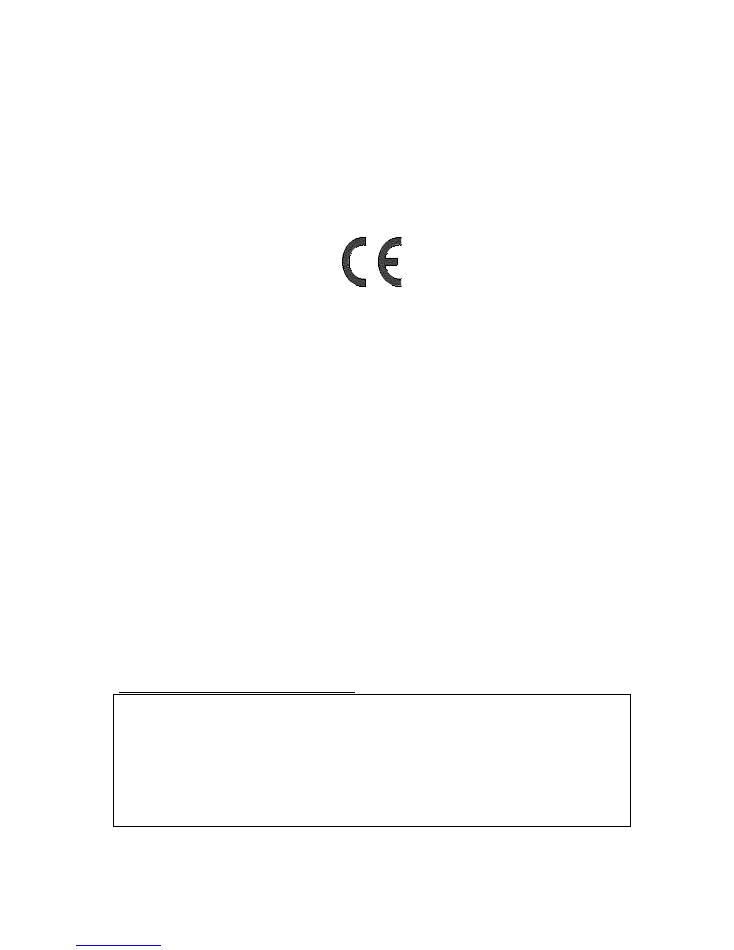
Talisman III Dynamic Loop Amplifier Systems (TAL/DLS1/3 & TAL/DLS5/3)
Publication Code TAL-DLS-3_TIG Issue 3
Page 2
Designed by Millbank Electronics
Manufactured in the UK by Federal Signal Limited
Federal Signal Limited operate a Quality Management
System which meets the requirements of
BS EN ISO 9001 : 1994
Federal Signal Limited is registered by the Lloyds Register
Lloyds Register certificate of Registration No. 923077
Product Compliance to EC directives for Standard Products
All standard products conform to the relevant directives,
regulations and standards for electronic and associated apparatus.
The equipment is CE marked both on the apparatus and the packaging.
The Modular range of products for use in Mainframes must be used
in the configuration as described in the product literature.
Failure to use the modular products in the manner described
will invalidate the EC Compliance.
Our products meet the appropriate British and International standards. A product “Declaration of Conformity” Statement is
available for each of the product ranges (available on request). This covers both the EMC and Low Voltage Directives.
UNPACKING
While all Millbank equipment is carefully packed to prevent damage in transit, we recommend that
the equipment is unpacked and inspected immediately on receipt. If damage has
occurred please advise your carrier and your supplier who will arrange appropriate action.
If it is necessary to re-pack the equipment for onward shipping or returning to Millbank for service
PLEASE ENSURE THAT THE ORIGINAL PACKING OR EQUIVALENT IS USED.
For further technical information please contact
our Customer Services Department.
on + 44(0) 1625 666600
or E-mail: CustomerServices@fedsig.co.uk
KEEP THIS INFORMATION IN A SAFE PLACE
Equipment Serial No
........................................................................................................................
Supplied by
........................................................................................................................
........................................................................................................................
Date
........................................................................................................................
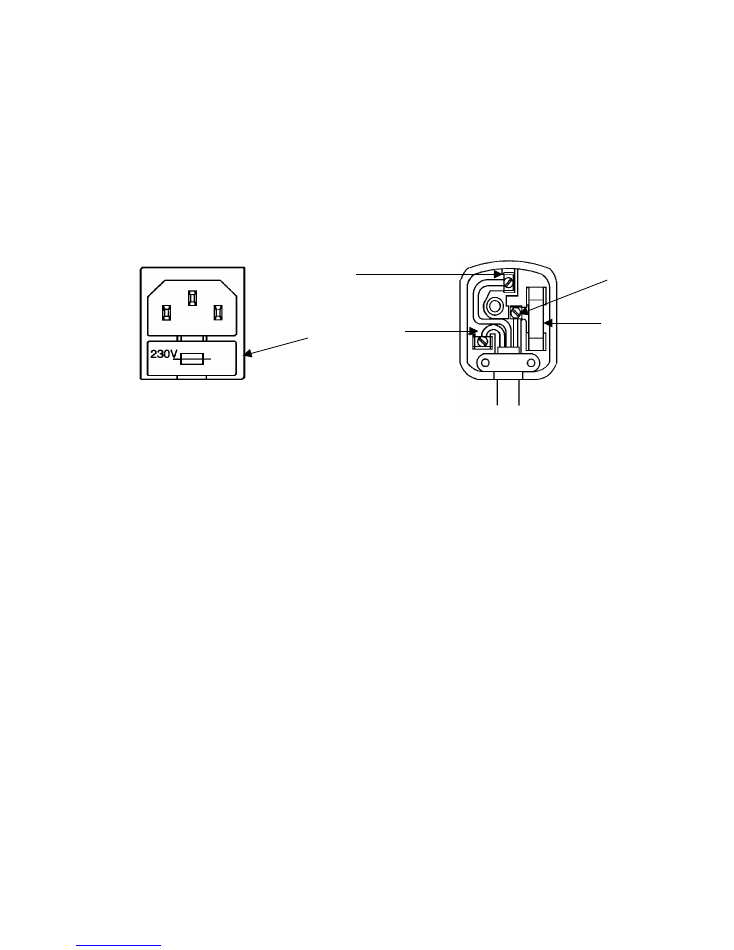
Talisman III Dynamic Loop Amplifier Systems (TAL/DLS1/3 & TAL/DLS5/3)
Publication Code TAL-DLS-3_TIG Issue 3
Page 3
1.
INSTALLATION
1.1
Precautions
IMPORTANT: Before operating the PAC Amplifier please take note of the following points:
1.1.1
Ensure that the equipment is connected to a suitable mains supply. The equipment is supplied configured
for 230V 50/60Hz AC operation.
1.1.2
For mains connections other than the UK, refer to the local requirements for connections to supply.
1.1.3
Always ensure that the equipment is properly earthed (grounded). Operating without an earth is dangerous
and may cause high levels of audible hum from the loudspeaker outputs.
1.1.4
Avoid siting the equipment in locations exposed to direct sunlight, near heaters or other heat sources. Avoid
locations with high humidity or dust levels. Do not obstruct the ventilation slots in the amplifier case and, if
the amplifier is rack-mounted, ensure that a 1U ventilation panel is fitted above the unit.
1.1.5
Never remove the top cover of the amplifier with the AC mains supply connected. All internal servicing
should be performed by a competent / qualified engineer.
1.1.6
Never make an internal adjustment when the AC supply is connected.
Fuse Holder
IEC Mains Inlet Socket
13A Mains Plug Wiring (UK only)
Green/Yellow
Earth
Blue
Neutral
Brown
Live
Fuse
5A Max.

Talisman III Dynamic Loop Amplifier Systems (TAL/DLS1/3 & TAL/DLS5/3)
Publication Code TAL-DLS-3_TIG Issue 3
Page 4
2.
WHY INDUCTION LOOPS ?
2.1
Introduction
The problems faced by the hearing-impaired are rarely appreciated by those with normal hearing.
Unfortunately hearing aids give only partial restoration of hearing with the added disadvantage that the built-
in microphone cannot mimic the normal ear/brain ability to differentiate between distant, wanted sounds and
nearby, unwanted noises, and so to distinguish speech clearly from a combination of direct, reflected and
reverberant sounds. For instance a hearing aid user attending a concert or play may turn up the volume
control in an attempt to improve intelligibility, invariably resulting in an increase in interference from nearby
coughs, rustles, etc., sometimes to painful levels.
All these problems can be overcome by feeding microphone signals or the existing public address (PA)
system audio directly to the hearing-aid so that only the wanted sound (without auditorium reverberation,
audience noises, etc.) is reproduced.
This can be achieved by driving audio frequency currents around a large loop of wire to generate a magnetic
field (varying in sympathy with the PA program material) and which could be picked up by suitable
equipment. Specially designed headsets are available from a number of manufacturers such as Beyer,
Danavox and telex which have applications in high-noise environments for paging/life-safety and for silent
reproduction of commentary in museums and art galleries.
However, since 1974 all UK National Health Service hearing aids have had a switch to select M (internal
microphone) or T (telecoil pick-up), the T position being originally intended for use with telephone handsets
(later designs of telephone have proved unsuitable for this use). ‘AFILS’ (Audio Frequency Induction Loop
System) are designed to work efficiently, taking into account the positions and electromagnetic
characteristics of the internal pick-up coils normally fitted to hearing aids.
Now with a suitably installed AFILS the hearing impaired can appreciate and enjoy everything that those with
normal hearing do and, as mentioned above, the same type of system can be used to provide paging/life
safety communication in very noisy areas, secret paging for security staff, disturbance free audio for spoken
commentary systems or individual AFILS for booking offices, bank tellers etc.
2.1
The MILLBANK Dynamic Loop System
The dual purpose design allows for assisted listening of the hearing impaired and for applications such as
commentary systems in museums and art galleries.
The audio requirements for the two applications are different; a hearing impaired user requires tight control
of dynamic range and restricted bandwidth to enhance intelligibility by maximising perceived volume while
limiting maximum signal peaks and frequencies. A non hearing impaired user, however, may require less
dynamic range compression and a wider bandwidth.
The Talisman range of audio induction loop amplifiers is unique in that it provides switch selectable options
to cater for these alternative uses. The bandwidth may be set to either 5KHz or 10KHz high frequency roll off
and the dynamic range compression circuit is switchable either on a peak limiter (to prevent distortion in
wide dynamic range applications) or as a dual time constant compressor reducing the dynamic range to no
more than 9dB peak to average for assisted listening applications.
A combined voltage and current feedback technique is used to optimise drive into a wide range of loop
impedances. This system overcomes the disadvantages normally associated with amplifiers using voltage
feedback only. Radio frequency interference (R.F.I.) is prevented by amplitude limiting and low pass filtering
the signal prior to the driver stage. Unlike current feedback only designs, the TAL DLS output stage cannot
clip when driving inductive loads as voltage feedback takes over when the clipping threshold is approached.
Importantly, the feedback configuration means that the dynamic loop system is stable into highly inductive,
multi-turn loops.

Talisman III Dynamic Loop Amplifier Systems (TAL/DLS1/3 & TAL/DLS5/3)
Publication Code TAL-DLS-3_TIG Issue 3
Page 5
3.
TAL/DLS DESCRIPTION
The Talisman Dynamic Loop System is designed for the specific applications of the assisted listening for the
hearing impaired, by the users hearing aid, and for wire free sound distribution in museums, art galleries,
etc.
The unique Millbank Electronic design incorporates the results of many years of operational experience in
this field and offers superior performance.
Features include:
3.1
Dual purpose design
For the hearing impaired, especially contoured frequency curve.
For other audio induction loop applications, museum commentary, secret paging, etc., a wide range
frequency response.
3.2
Dynamic amplifier output allows
New flexibility in loop design.
Interference (R.F.I) free loop design.
3.3
Incorporates Frequency Contour Control
Adjusts performance to match exact requirements of the listener.
3.4
Switchable Automatic Gain Control
Compensates for differences between signal inputs (microphones for example), especially important for
hearing aid users.
3.5
Fast Acting Compression Circuitry
Controls signal peaks without audible distortion and prevents generation of interference within the
amplifier.
3.6
L.E.D. Display for optimum input levels and loop integrity
Allows optimum setting of signal processing circuits.
Provides visual reassurance of loop connection and operation.
3.6
Linear calibrated bargraph display of loop current
Continuous display of peak current in loop, confirms correct drive conditions.
3.6
Comply with existing and projected industry standards
Designed for loop systems to meet BS6083:Part4:1981.
Designed to meet interference regulation MPT1370.
Two models are available: a single input version to connect to an existing sound reinforcement system and a five input
version where no sound reinforcement system is to be incorporated and there is a requirement for sound from up to
five sources to be processed.
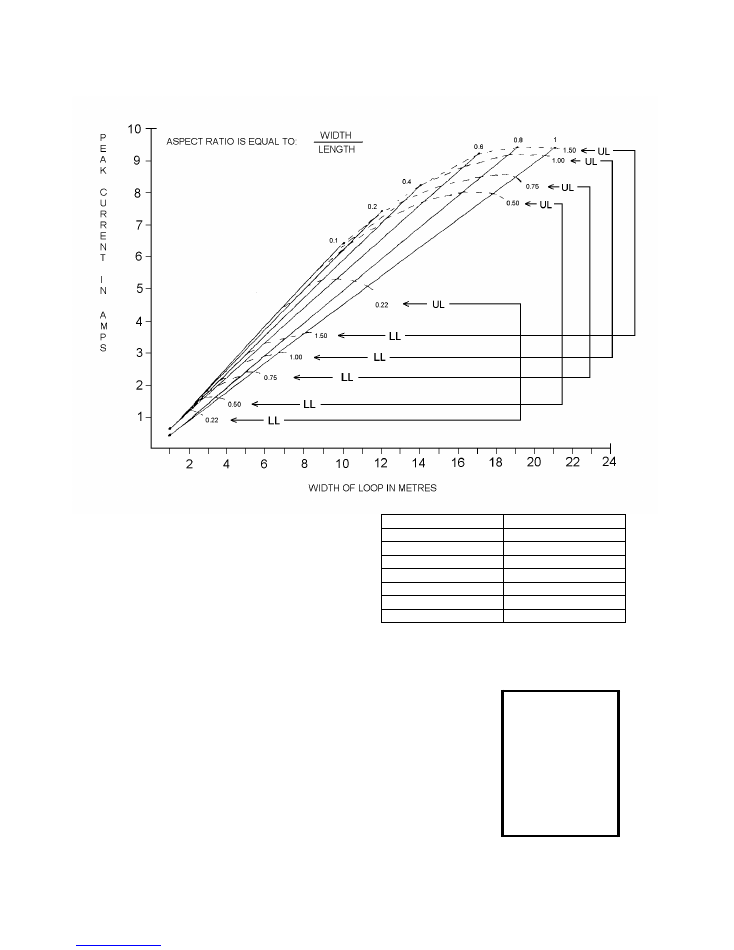
Talisman III Dynamic Loop Amplifier Systems (TAL/DLS1/3 & TAL/DLS5/3)
Publication Code TAL-DLS-3_TIG Issue 3
Page 6
CONDUCTOR TYPE
COPPER AREA
1/0.8mm
0.5mm sq.
7/0.2mm
0.22mm sq.
13/0.2mm
0.4mm sq.
16/0.2mm
0.5mm sq.
24/0.2mm
0.75mm sq.
32/0.2mm
1.0mm sq.
30/0.25mm
1.5mm sq.
3.
CURRENT / CONDUCTOR GRAPH
Only a single turn loop of cable is normally required.
This assumes that the receiver is 1.5 metres above or
below the plane of the loop.
The graph corresponds to DLS use with the AGC
switched on.
Thus the maximum r.m.s. current in the loop is limited in
the event of fault conditions, such as feedback between
loop and microphone.
If the amplifier is to be used with the AGC switched off, a longer continuous current could be produced under fault
conditions and therefore care should be taken to allow for this in selecting conductor type.
Example:
Aspect ratio (W/L) = 0.8
From the graph: 16m intersects with 0.8 A.R.
n area bounded by upper (UL) and lower (LL) limits of
0.22 and 0.50 mm sq. So either 0.2mm sq. or 0.50mm
sq. may be used.
Current required = 7.8 Amps
20m
16m
L
W

Talisman III Dynamic Loop Amplifier Systems (TAL/DLS1/3 & TAL/DLS5/3)
Publication Code TAL-DLS-3_TIG Issue 3
Page 7
4.
CHECK-LIST FOR SYSTEM DESIGN USING TAL/DLS
Refer also to setting up procedure on following pages
4.1
Before starting you will need the following:
a) Tape measure (at least 10m long).
b) Magnetic field strength meter.
c) AFILS receiver (headphones and hearing aid recommended).
d) Tape of continuous speech and tape-player, or a sympathetic assistant with a microphone.
4.2
Using the receiver(s) and field strength meter check the area to be covered for background magnetic noise.
Dimmers, power cabling, motors, etc., which can radiate powerful magnetic noise must be switched off
during this test. No standard currently exists but we recommend that the noise should be at least 26dB
below 0.1A/m and that the character of the noise is not objectionable (buzzes can sound worse than pure
hum).
4.3
Together with the customer decide on the most appropriate positioning for the wire loop and take the
dimensions so that an ‘ideal’ shape can be approximated (square or rectangle, etc.). Note the width
(shortest side of the loop), and calculate in metres the aspect ratio by dividing the width by the length.
4.4
Using the graph, find the width (shortest side) of the loop and move vertically up the graph until an
intersection is made with the appropriate ‘aspect ratio’ line.
4.5
The intersection of the loop width and ‘aspect’ ratio also determine the conductor area of the cable to be
used, taking into account both the current-carrying capacity and cable resistance.
The current demanded by this size of loop can be read – off the vertical axis. If the current indicated
is in excess of 9 Amps then separate loops should be employed, driven by separate amplifiers.
4.6
Temporarily install the loop as close as possible to its final position and test with the taped speech or
microphone and TAL DLS amplifier to confirm design parameters.
Hidden metalwork, etc., may cause reductions in field strength which can be compensated by
adjusting the master control during this test. In extreme cases the installation may prove totally
unsuitable for loop use and an alternative technology offered to the customer (e.g. Infra-Red
systems).
The frequency response should also be checked, losses of high frequencies may be recovered by
the use of the TAL DLS ‘Response’ control.
4.7
Assuming satisfactory test results, permanently install the loop wiring (not in metal conduit or trunking),
signal cabling (which should be routed as far as possible from the loop wire) and a.c. power supply. The
amplifier generates heat and must be located in a position with adequate ventilation.
4.8
Set all ‘input’ front panel gain controls to maximum, the ‘master’ control and ‘response’ control to mid
positions. Set the ‘response’ switch (located on the rear panel) to the required position – 5KHz for hearing-
aid use, 10KHz for other uses.
4.9
Depending on the use of the system, the AGC is set-up in two alternative ways:
4.9.1
AGC and limiting (for hearing aid use). Select the AGC mode by setting the ‘AGC’ switch (located
on the rear panel) to ON.
4.9.2
Limiting only (for non hearing aid use). Select the limiter only mode by setting the ‘AGC’ switch to
OFF (the switch is located on the rear panel).
4.10
The master control should now be adjusted to give the required current drive to the loop, indicated by the
bargraph display on the front panel. The field strength must be checked and the amplifier master control
adjusted if necessary.
4.11
Check the field strength over the entire area to be covered, note any areas of poor coverage and ensure
that hearing aid users are notified of such areas.
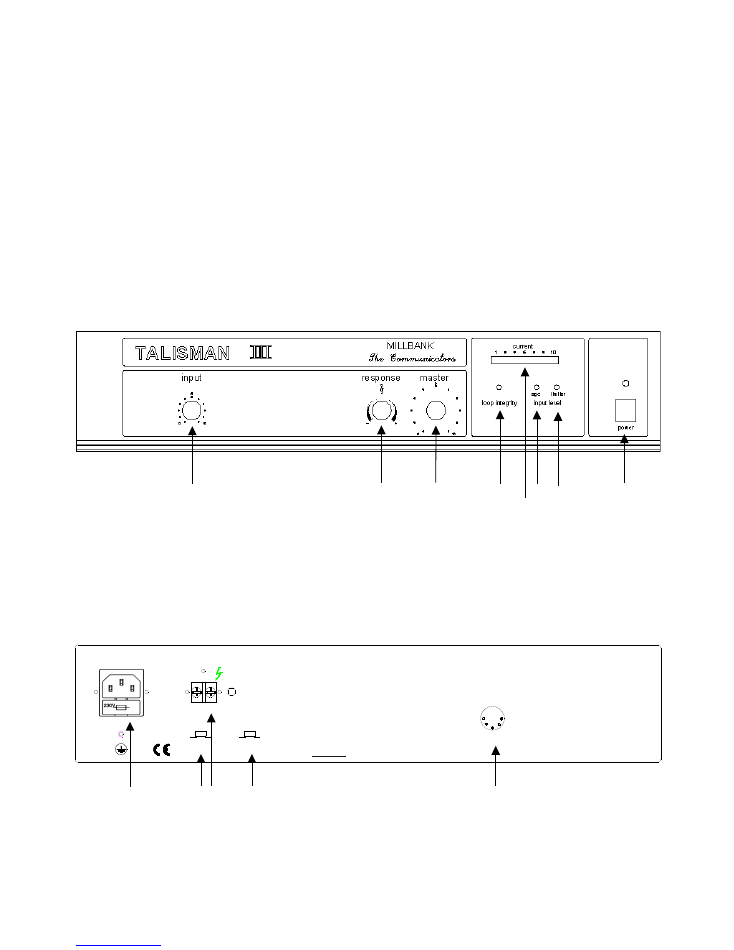
Talisman III Dynamic Loop Amplifier Systems (TAL/DLS1/3 & TAL/DLS5/3)
Publication Code TAL-DLS-3_TIG Issue 3
Page 8
3
2
4
5
6
7
8
Ser No:
TAL DLS1
England SK10 2NF
Cheshire
Macclesfield
Hurdsfield Industrial Estate
Signal House
Federal Signal Ltd
Dynamic Loop Amplifier System
Designed by Millbank on behalf of Federal Signal Ltd. Manufactured in R.O.C.
No user serviceable parts inside, refer servicing to qualified personel.
To avoid electric shock hazard, do not expose this appliance to rain or moisture.
AC 230V~240V, 50/60Hz
T3,15L 250V
WARNING
LOOP
High Voltage
DANGER
Input
Limiter
5kHz
Agc
10kHz
Response
Mode
1
2 3
4
5
4.12
Confirm that the ‘Loop Integrity’ LED functions by disconnecting the loop wire, the LED should extinguish in
about 5 seconds.
4.13
As a final check, the response control should be adjusted, if necessary, to achieve optimum frequency
response.
4.14
Set all unused input control to minimum.
4.15
The notice supplied with the equipment informing potential hearing aid users that the system is installed
should be clearly displayed.
4.16
Before leaving the installation it is most important that the owner and users of the system are familiar with its
operation and understand the need for regular checks to be carried out on the system – checking LED
indicators for input level, loop integrity and drive current and performing listening tests.
5.
CONTROLS AND CONNECTIONS
5.1
TAL/DLS1/3
1. Input Level Control.
2. Tone Control.
3. Master Level Control.
4. Loop Integrity Indicator.
5. Loop Current Indicator.
6. AGC Indicator
7. Limiter Indicator.
8. Power On/Off Switch.
1. Mains Input Socket and Fuse
2. Frequency Response Switch
3. Loop Connector
4. Mode Switch
5. Input Socket
1
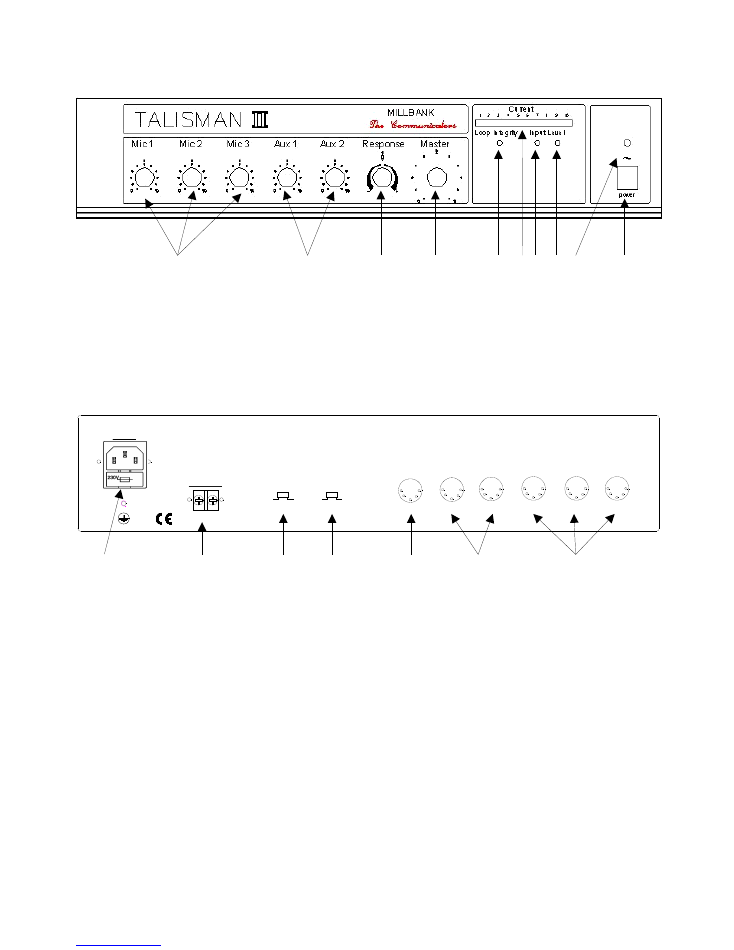
Talisman III Dynamic Loop Amplifier Systems (TAL/DLS1/3 & TAL/DLS5/3)
Publication Code TAL-DLS-3_TIG Issue 3
Page 9
Designed by Millbank on behalf of Federal Signal Ltd. Manufactured in R.O.C.
No user serviceable parts inside, refer servicing to qualified personel.
To avoid electric shock hazard, do not expose this appliance to rain or moisture.
AC 230V~240V, 50/60Hz
T3,15L 250V
WARNING
Tape out
LOOP
Aux 2
Aux 1
Mic 3
Mic 2
Mic 1
10kHz
Agc
5kHz
Limiter
Response
Mode
England SK10 2NF
Ser No:
TAL DLS5
Dynamic Loop Amplifier System
Hurdsfield Industrial Estate
Macclesfield
Cheshire
Federal Signal Ltd
Signal House
5.2
TAL/DLS 5/3
1. Microphone Input Level Controls
2. Auxiliary Input Level Controls
3. Tone Control
4. Master Level Control
5. Loop Integrity Indicator
6. Loop Current Indicator
7. Input Level AGC Indicator
8. Input Level Limiter Indicator
9. Power On Indicator
10. Power On/Off Switch
1. Mains Input Socket.
2. Loop Connector.
3. Response Switch.
4. Mode Switch.
5. Tape Output.
6. Auxiliary Inputs.
7. Microphone Inputs.
1
2
3
4
5
6 7
8 9
10
1
2
3
4
5
6
7

Talisman III Dynamic Loop Amplifier Systems (TAL/DLS1/3 & TAL/DLS5/3)
Publication Code TAL-DLS-3_TIG Issue 3
Page 10
6.
SETUP PROCEDURE
6.1
Connections
6.1.1
Loop
Screw connections are provided for connection of the wire loop.
6.1.2
Microphones
All connections to the microphone inputs are by 5 pin180° DIN connectors, which are supplied with the
equipment. Microphone 1 has the facility of priority, making it possible to mute all other inputs. To utilise this
feature the access pins 4 & 5 must be closed (shorted) during the announcement, this is normally done via
the PTT switch on the microphone to be connected.
If the priority function on Microphone Input 1 is not used, ALL inputs will be in mix-mode.
All microphone inputs are balanced with 200µV @ 200 sensitivity. Signal is connected to pin 1 and the
screen to pin 2.
Wiring Instructions for Microphone Input 1:
Wiring Instructions for Microphone Inputs 2 and 3:
6.1.3
Auxiliary
Up to two auxiliary input signals can be used, these can be from signal sources such as Cassette, Radio or
CD players, Two sensitivity levels are provided at 300mV (low) and 50mV (high). Pin 3 provides the high
sensitivity, pin 5 provides the low sensitivity and pin 2 is the screen connection.
Wiring Instructions:
6.1.4
Tape output (DLS 5 only)
The connector can be used for recording purposes or driving slave amplifiers. An output level of 550mv (at
full output) is provided on pin 1 and the screen or ground is on pin 2.
Wiring Instructions:
1
2
3
4
5
Hot
Cold
Priority
Priority
Screen
1
2
3
4
5
Screen
NC
NC
Low
High
1
2
3
4
5
Hot
Cold
Screen
NC
NC
1
2
3
4
5
Screen
NC
NC
550mV
Output
NC

Talisman III Dynamic Loop Amplifier Systems (TAL/DLS1/3 & TAL/DLS5/3)
Publication Code TAL-DLS-3_TIG Issue 3
Page 11
6.2
Setup
6.2.1
Set the response switch to the desired frequency response, this should be set to 5KHz for hearing impaired
applications.
6.2.2
Set the mode switch to AGC (Automatic Gain Control) or the limiter position. In AGC mode (hearing
impaired applications), the AGC LED should flicker off during pauses in speech by setting the input level
using the input level controls located on the front panel. In the limiter mode, the input level should be set
such that the limiter LED only illuminates during signal peaks.
For hearing impaired applications.
Set the response switch to 5KHz, the mode switch to AGC.
The AGC input level LED should illuminate only whilst signal
is passing through the equipment.
For silent paging applications.
Set the response switch to 10KHz, the mode switch to Limiter.
The limiter LED should only illuminate during signal peaks.
Additional gain and frequency responses are programmable and further advise may be sought from the
Customer Services department of Federal Signal Limited – see details overleaf.

Talisman III Dynamic Loop Amplifier Systems (TAL/DLS1/3 & TAL/DLS5/3)
Publication Code TAL-DLS-3_TIG Issue 3
Page 12
IN CASE OF SERVICE REQUIREMENTS PLEASE CONTACT YOUR SUPPLIER
IN THE EVENT OF DIFFICULTY COMMUNICATE DIRECT TO:
FEDERAL SIGNAL LIMITED
MILLBANK ELECTRONICS Customer Service
Signal House, Charter Way, Hurdsfield Industrial Estate, Macclesfield, Cheshire SK10 2NF
Telephone: + 44 (0) 1625 666600 - Fax: +44 (0) 1625 611352 - Web-site: www.fedsig.co.uk
E-mail: CustomerServices@fedsig.co.uk or Repairs@fedsig.co.uk
7.
Service and Warranty
Federal Signal Ltd. guarantees this product against defects in either
materials or workmanship. The guarantee does not extend to damage
caused by improper installation, improper storage, misuse, or operation
outside stipulated conditions.
Our warranty covers only goods returned to our premises for either repair or
replacement as deemed appropriate by Federal Signal Ltd.
In order to expedite the process:
Contact your supplier and quote the model and serial number of your
equipment.
Should you require sending the goods directly to the manufacturer, please
contact Federal Signal Limited Customer Services, which will provide you
with a Return Goods Authorisation (RGA) number.
This RGA number should then be referenced on every related
correspondence.
If it is necessary to re-pack the equipment for onward shipping or returning
to Millbank for service or repair, PLEASE ENSURE THAT THE ORIGINAL
PACKING OR EQUIVALENT IS USED.

Talisman III Dynamic Loop Amplifier Systems (TAL/DLS1/3 & TAL/DLS5/3)
Publication Code TAL-DLS-3_TIG Issue 3
Page 13
Document Change History
Issue
Details
Date
01
First Issue
Mar 00
02
Updated to include new standard clauses and company
details
May 01
03
Updates section 6 to include wiring details and referral to
additional programming features
Dec 01
03
Jumper setting investigated and recorded – See Customer
Services Department
Dec 01
Referenced Documentation
Title
Publication Code
Referenced Tools
Description
Part Number